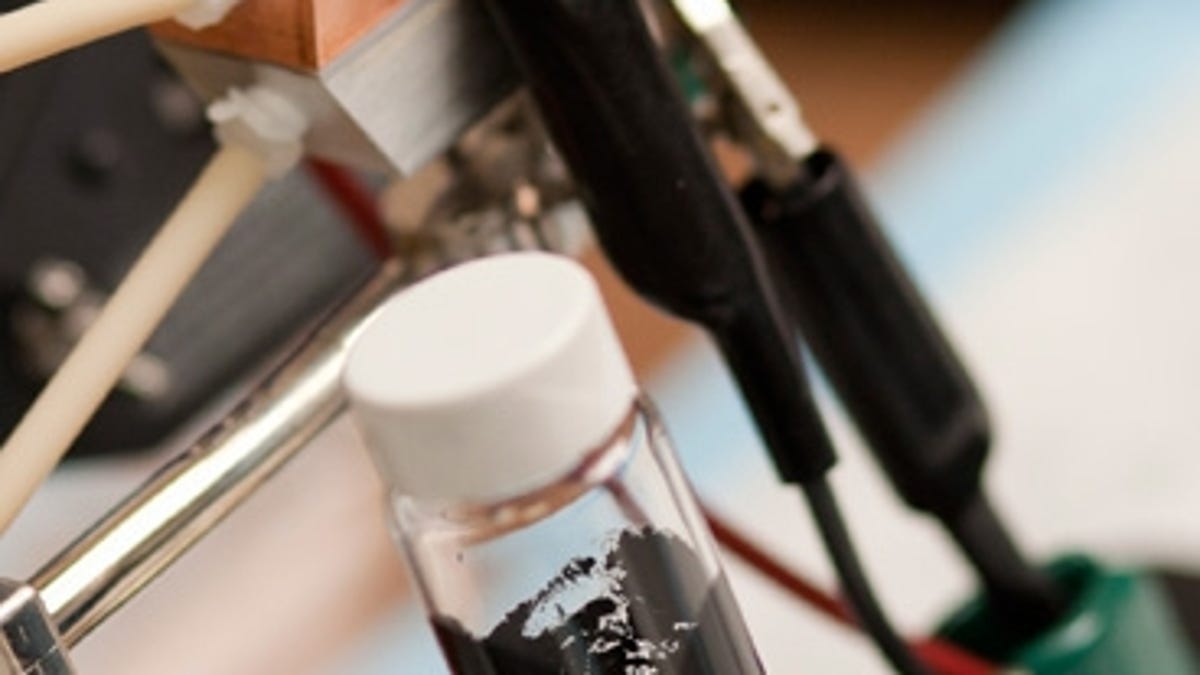MIT flow battery breaks mold for cheap storage
MIT researchers reinvent how batteries work, in a development that could lead to energy-dense batteries for electric vehicles and power grid storage.

Instead of filling up with gasoline, electric cars with a new design may one day refuel their batteries with "Cambridge crude."
Researchers from the Massachusetts Institute of Technology today published details on a battery design that reinvents the operation of traditional lithium ion batteries by using flowable, rather than solid, materials. In a paper published in the journal Advanced Energy Materials, they said the approach has the potential to boost battery storage capacity many times today's levels while being inexpensive to manufacture for both electric vehicles and grid storage.
The technology developed in the lab has been licensed to 24M, a company spun out of MIT and funded with about $16 million in venture capital and federal research funding. Yet-Ming Chiang, professor of materials science at MIT and one of the co-founders of lithium ion battery maker A123 Systems, is one of the primary researchers behind the flow battery.
The new design combines materials used in today's lithium ion batteries with the concept of a flow battery. Flow batteries, which are used mainly for grid storage, have two tanks with liquid electrolytes that are pumped through a membrane to create a chemical reaction that generates a flow of electricity. Liquids are pumped in reverse direction to store charge.
In this case, researchers are using a flowable slurry which contains compounds typically used with lithium ion batteries to build a "semi-solid flow cell." As in a traditional flow battery, liquids are pumped through a membrane to create the chemical reactions needed to charge or discharge a battery. Since the liquids are densely packed with particles, the gooey liquids ooze rather than flow like water.
The advantage of this approach is that more active battery material can be placed into the same amount of space compared to traditional lithium ion battery. In today's lithium ion batteries, packaging and other inactive components take up the bulk up of the space. This flow cell design eliminates the need for the packaging and foils around individual battery cells.
Compared to flow batteries, researchers showed in the paper that lithium-based compounds can hold about 10 times more energy than the materials usually used in flow batteries. A bigger battery can be made simply by using larger tanks.
Having battery electrodes--the anode and cathode-in a liquid form opens the possibility for electric-vehicle charging stations that replace the electrode material while a driver waits. Researchers call the active materials "Cambridge crude" because it could be used as a liquid fuel in this scenario.
Researchers project that manufacturing can be simplified compared to lithium ion batteries. In the paper, they project batteries that cost $250 per kilowatt-hour, which is less than half of today's prices.
The researchers have built prototypes to demonstrate the technology and test performance but actual products will take years to develop and match the performance of today's batteries, according to MIT. One of the traditional problems with flow batteries is the complexity and power needed to operate the pumps.
The basic architecture is independent of specific battery chemistries, which means that it can benefit from advances in battery materials. "We'll figure out what can be practically developed today," Chiang said in a statement, "but as better materials come along, we can adapt them to this architecture."

